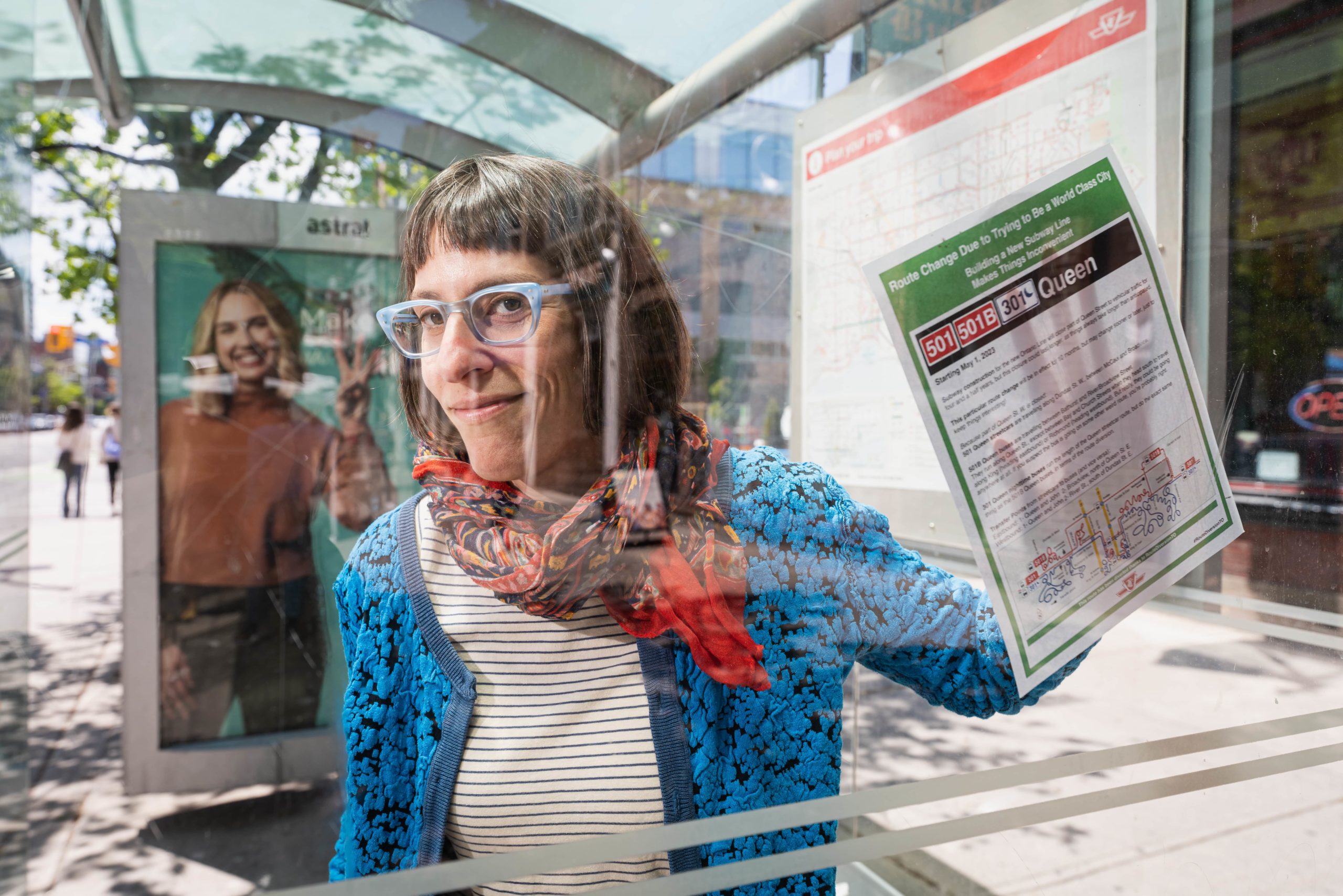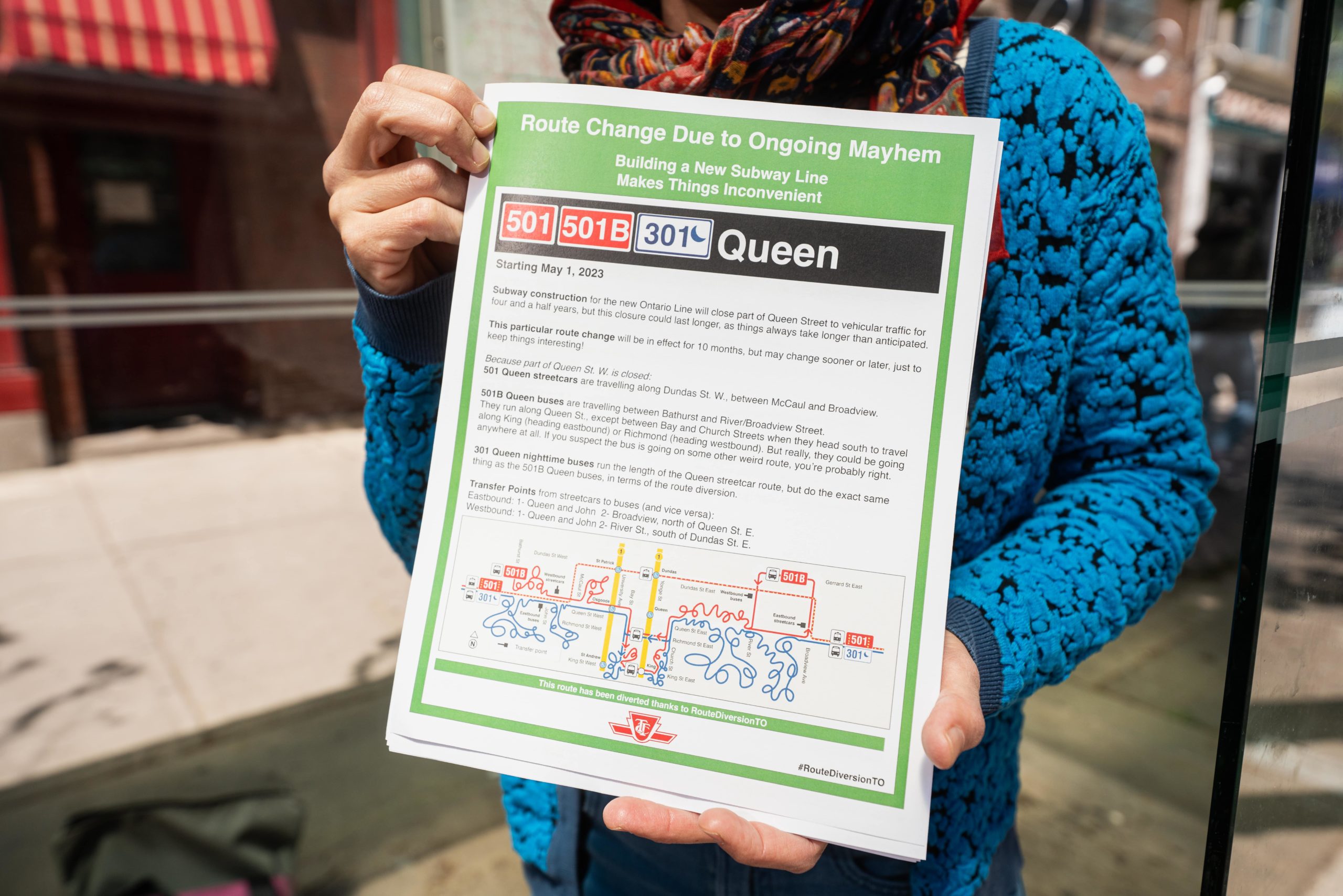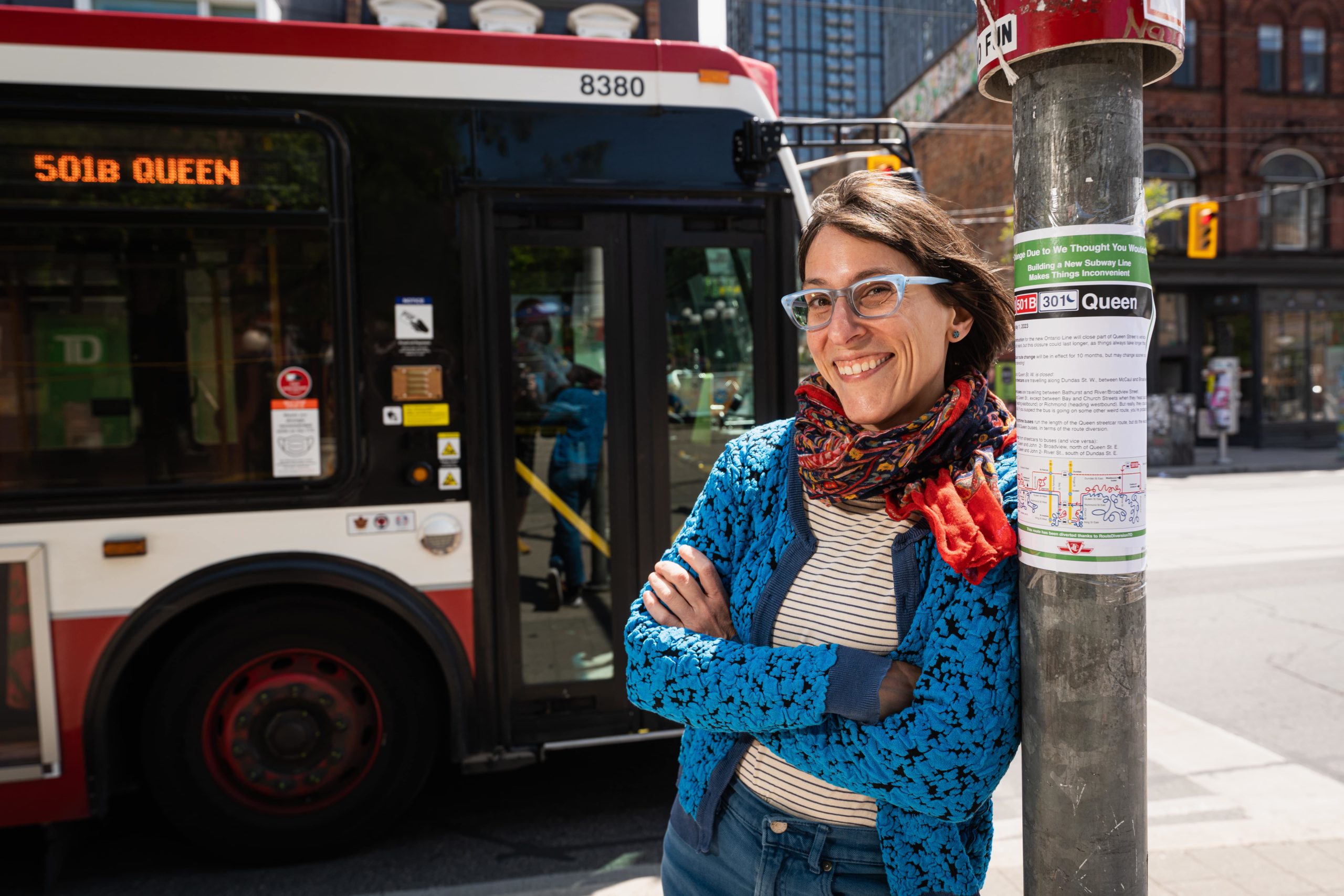“The TTC should start paying me”: Meet the artist posting satirical signage along the Queen streetcar route
Frustrated commuter Shari Kasman on spoofing the city’s transit agency, her proclivity for public art and how riding the TTC can be like tripping on LSD
 If you’re one of the hundreds of thousands of Torontonians who ride the 501 Queen streetcar, prepare for a cruel summer—and fall, winter and spring. Construction on the new Ontario Line means that the city’s second-most-popular streetcar route will be diverted for the next four and a half years (at least). The TTC calls it a “necessary inconvenience,” but for Bloordale artist and writer Shari Kasman, a few other choice words come to mind. Last week, the co-creator of the Bloordale Beach installation put up a series of “temporary route change” posters, spoofing the TTC’s impenetrable signage and impossible-to-follow diversions. Here, she tells us what inspired her and why she’s pretty sure the top dogs at the transit agency are paying attention.
If you’re one of the hundreds of thousands of Torontonians who ride the 501 Queen streetcar, prepare for a cruel summer—and fall, winter and spring. Construction on the new Ontario Line means that the city’s second-most-popular streetcar route will be diverted for the next four and a half years (at least). The TTC calls it a “necessary inconvenience,” but for Bloordale artist and writer Shari Kasman, a few other choice words come to mind. Last week, the co-creator of the Bloordale Beach installation put up a series of “temporary route change” posters, spoofing the TTC’s impenetrable signage and impossible-to-follow diversions. Here, she tells us what inspired her and why she’s pretty sure the top dogs at the transit agency are paying attention.
For anyone who hasn’t come across your signs in the wild, can you describe them?
They’re basically my own edited versions of the TTC’s signs—you know, those “temporary route change” flyers that get posted at relevant stops. The project started last fall, in response to diversions along the 506 Carlton line. One night, I was going to a magazine launch party on the other side of the city—normally I’m a biker, but I wanted to have a few drinks, so I tried taking the 506. But, even though it was supposed to come every ten minutes, it never showed up. Later, when I wasn’t in such a rush, I looked into it online. I realized how totally indecipherable the “temporary route diversion” signs are. It’s like they’re speaking a different language. So I scanned the TTC’s poster, made some adjustments using Photoshop and then replaced the originals with my version. I did the same thing this month, after the TTC announced route changes along the Queen streetcar line.

Related: This teen’s transit app rewards people for riding the TTC
Can you explain what you mean by “made some adjustments”?
Well, I wanted to create something that people would actually understand. For example, the TTC’s signs for the Queen Street route change say, “The 501 B Queen buses will operate as follows: Eastbound: Bathurst Street, east on Queen Street West, south on Bay Street, east on King Street, north on Church Street and east on Queen Street East to Broadview Avenue.”
My head hurts.
Right—it’s not something most people can picture. You’d have to do a huge amount of mental gymnastics. With my version, I tried to explain it the way an actual person would. I wrote, “501 B Queen buses are travelling between Bathurst and Broadview Street. They run along Queen Street except between Bay and Church Street, when they head south to travel along King (heading eastbound) or Richmond (heading westbound), but really, they could be going anywhere at all. If you suspect the bus is going on some other weird route, you’re probably right.” That’s where the satire comes in, obviously. I added headlines that would hopefully make people laugh, like route change due to “we thought you wouldn’t notice” or “trying to be a world class city” or “ongoing mayhem.”
And you replaced the regular routing lines with a series of loops and squiggles.
We’ve all been there, right? When you’re on a streetcar or shuttle bus and suddenly everyone’s looking around like, Where is this thing taking us? I thought squiggles and loops were a good representation of that experience.
Do you consider what you’re doing a prank? A protest? A guerilla art installation?
I describe my work as urban intervention. It’s often based on things about the city that drive me crazy, and I’m trying to do a few things at once: solve a real problem, criticize a public institution and make people laugh.
The TTC has referred to the interruption of the 501 line as a “necessary inconvenience.” Is that how you would describe it?
I would more likely call it a “huge pain in the ass,” but I don’t think they’re big fans of that kind of language. I guess “necessary inconvenience” is pretty accurate. My issue is not with the actual construction plans—but could they not improve their basic communication? It’s not hard. I did it in an afternoon.

Your work has received some love on social media. Is there a response you’re particularly fond of?
There was a Reddit thread last fall with some amazing comments. Someone said, “Looks like my LSD trip.”
Have you heard anything from the TTC?
Not officially. But my 506 Carlton posters went up last September, and by mid-October they had simplified the route. Stuart Green, the head of communications at the TTC, talked about it on the CBC, and I swear he made a squiggly line with his finger. I like to think that was a nod. And then, earlier this month, I happened to meet two guys from the TTC communications team at an event. I gathered that a photo of my Queen Street sign was circulating among staffers. The communications guys were really nice. Every time I brought up an issue, like the unclear language on the signs, they would tell me that they’d discussed it at a meeting. I guess their meetings aren’t very effective.
You mentioned that your art is often a response to things in the city that frustrate you. What else is on that list?
The first sign project I did was back in 2015, creating posters to discourage people from feeding the pigeons in Bloordale—those pigeons are no joke. I’m not sure how much it helped, but the city did introduce a bylaw banning pigeon-feeding in 2021. Another project was Bloordale Beach, which was a “beach” I created on a vacant lot owned by the TDSB. This was during Covid, and even though the lot was fenced off, people had been sneaking in. One day I saw someone sunbathing there, and I got the idea to make it the city’s only landlocked beach. I made signs and put out lawn chairs. It got really popular—one woman even brought a unicorn floatie. It was a joke, sort of, but it was also a beach.
What’s next on your hit list? I guess public transit provides endless opportunities.
It’s true, but the TTC will have to pay me if they want me to fix more signs. It’s funny, after I did the Carlton streetcar posters, a friend sent me a link to a job posting in communications at the TTC. I actually applied. I wrote a great cover letter and included a bunch of quotes from the Reddit thread where people had praised my work—“Give this person a job” and the like. I never heard back, but that wasn’t a big surprise.
This interview has been edited for length and clarity.
